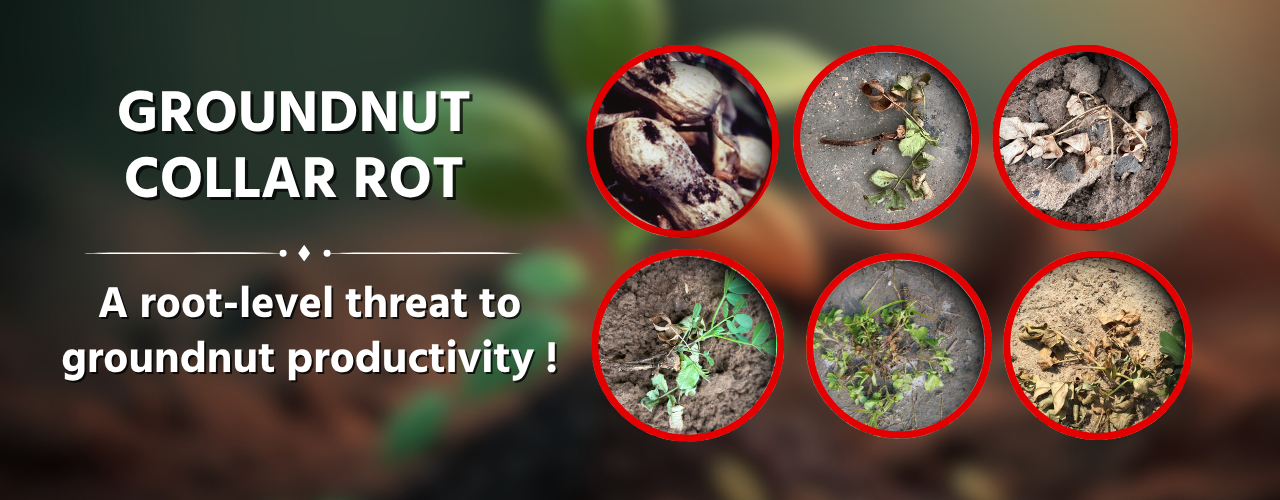GROUNDNUT COLLAR ROT– A root-level threat to groundnut productivity !
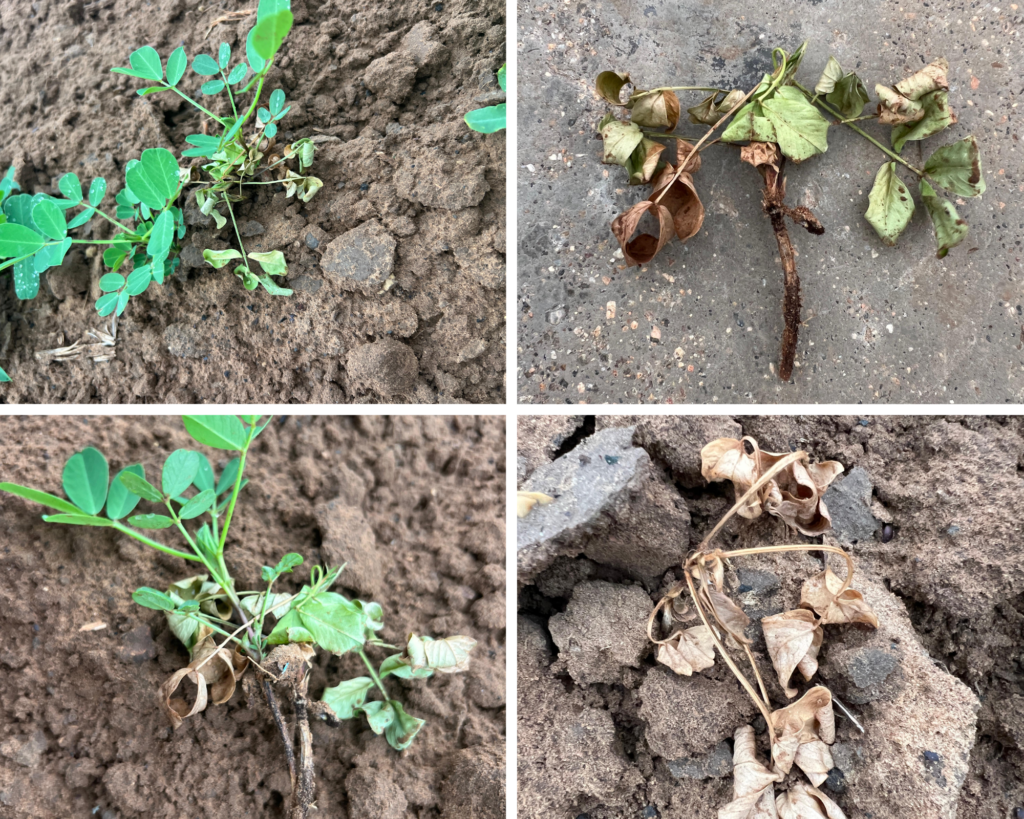
Image Credit – Harsh J. Patel
Collar rot is a soil-borne fungal disease that affects groundnut (peanut) plants, particularly during the early stages of growth. It causes rotting at the collar region—where the stem meets the soil surface—leading to plant wilting and eventual death. It can result in significant yield losses if not managed effectively.
Let’s explore this disease in depth, understand its causes, symptoms, and most importantly, the permanent and sustainable solutions to control it.
Table of Contents
What is Collar Rot?
Collar rot is a serious fungal disease that affects groundnut and several other crops, particularly during their early growth stages. It derives its name from the “collar” region of the plant—the zone where the stem meets the soil surface, which is the primary site of infection. This disease is considered soil-borne and seed-borne, meaning it can persist in the soil and be transmitted through infected seeds. The most common fungal pathogens responsible for collar rot in groundnut are: Aspergillus niger, Aspergillus flavus. These fungi thrive in warm, moist environments and are known for producing spores that can survive in the soil for long periods, making them difficult to eradicate. If not controlled, collar rot can cause patchy emergence in the field and reduce plant population
Scientific Name of the Pathogen
The notorious pathogen responsible for groundnut collar rot are : Aspergillus niger and Aspergillus flavus
Kingdom: Fungi
Phylum: Ascomycota
Class: Eurotiomycetes
Order: Eurotiales
Family: Trichocomaceae
Genus: Aspergillus
Species: Aspergillus niger, Aspergillus flavus
Past Losses due to Collar Rot in Groundnut
Collar rot Caused significant economic and yield losses in groundnut-growing regions of India, especially under favorable conditions like high soil moisture, poor drainage, and monocropping. Estimated Yield Losses due to Collar rot is 20–30% in moderately affected fields. In severe outbreaks, up to 50% crop loss has been reported. Yield loss varies based on soil type, rainfall pattern, and seed/soil health. Post-emergence mortality of seedlings makes collar rot particularly damaging in early stages.
| State | Main Regions Affected | Reason |
| Gujarat | Saurashtra, North Gujarat | High incidence during kharif season due to heavy rainfall and poor drainage. |
| Andhra Pradesh | Anantapur, Chittoor | Rainfed cultivation and poor drainage conditions favor disease development |
| Tamil Nadu | Dryland zones, various districts | Affects rabi-summer crops under fluctuating moisture conditions |
| Karnataka | Dharwad, Bellary,Northern Karnataka | Disease linked to erratic rainfall and temporary water stagnation |
| Rajasthan | Southern Rajasthan, Udaipur, Banswara | Occurs mainly during the monsoon due to poor field drainage. |
| Maharashtra | Vidarbha, Marathawada | Reported under both irrigated and rainfed groundnut systems. |
Symptoms of Collar Rot Disease
The fungus primarily affects young groundnut seedlings, but can also appear at later stages under favorable conditions. The symptoms can be categorized into initial (early) and severe (advanced) stages:
Initial Symptoms (Early Stage)
- Wilting of Seedlings:
One of the first noticeable signs.Seedlings appear droopy or slightly wilted, particularly in the early morning.Wilting is not uniform—appears in scattered patches in the field. - Discoloration of Collar Region:
The area where the stem meets the soil becomes light brown to dark brown and blackish. Subtle at first but spreads quickly with moisture and warmth.

Symptoms – Discoloration of Collar Region
Image credit: researchgate.net
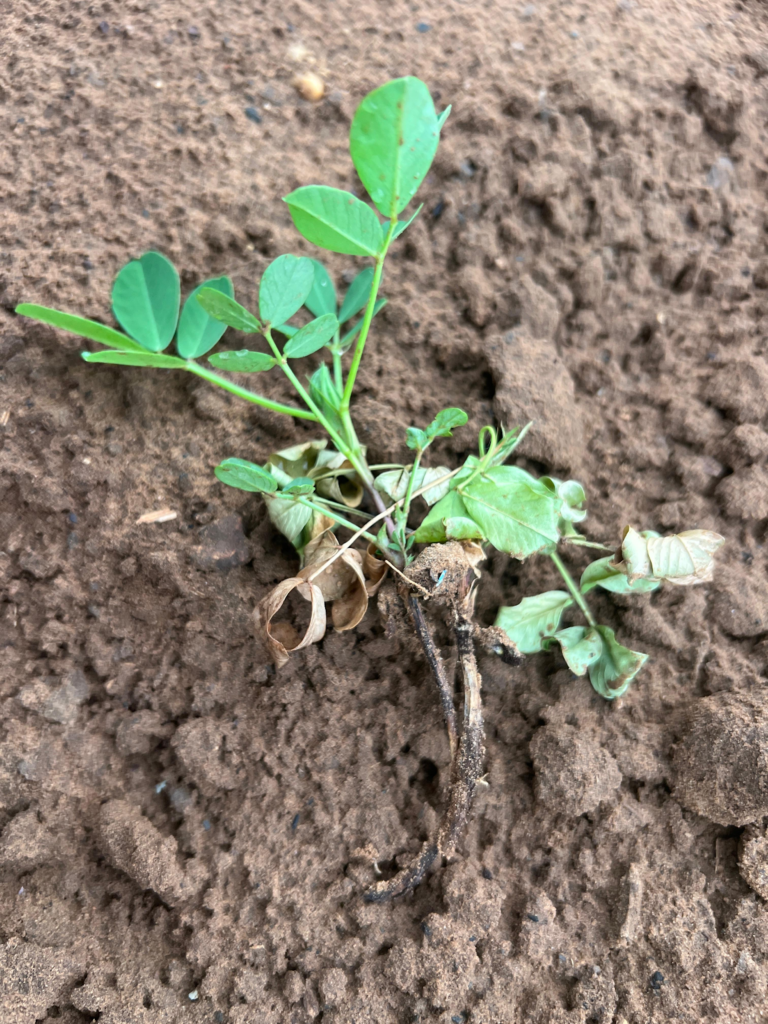
Symptoms – Discoloration of Collar Region
Image Credit – Harsh J. Patel
- Softening of Stem Base and slow growth:
The base of the seedling becomes soft and weak, causing poor structural support. Affected plants show stunted growth and may lag behind healthy plants in development.
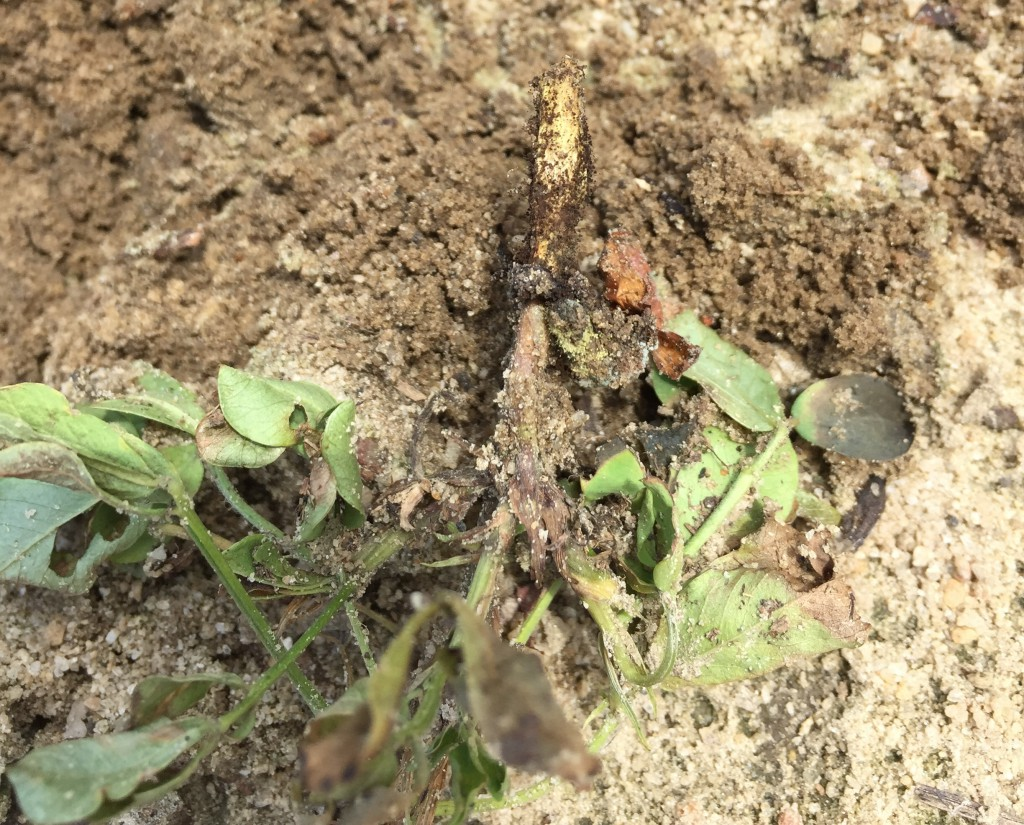
Symptoms – Seedling base becomes soft and weak
Image credit: researchgate.net

Symptoms- Seedling with weak and soft base gradually moves towards mortality
Image Credit – Harsh J. Patel
- Seedling Death:
As the fungus progresses, it causes pre- or post-emergence damping-off (seedlings die before or just after emerging). Sudden wilting of young seedlings, especially 7–15 days after emergence.

Post-emergence seedling death
Image credit: researchgate.net
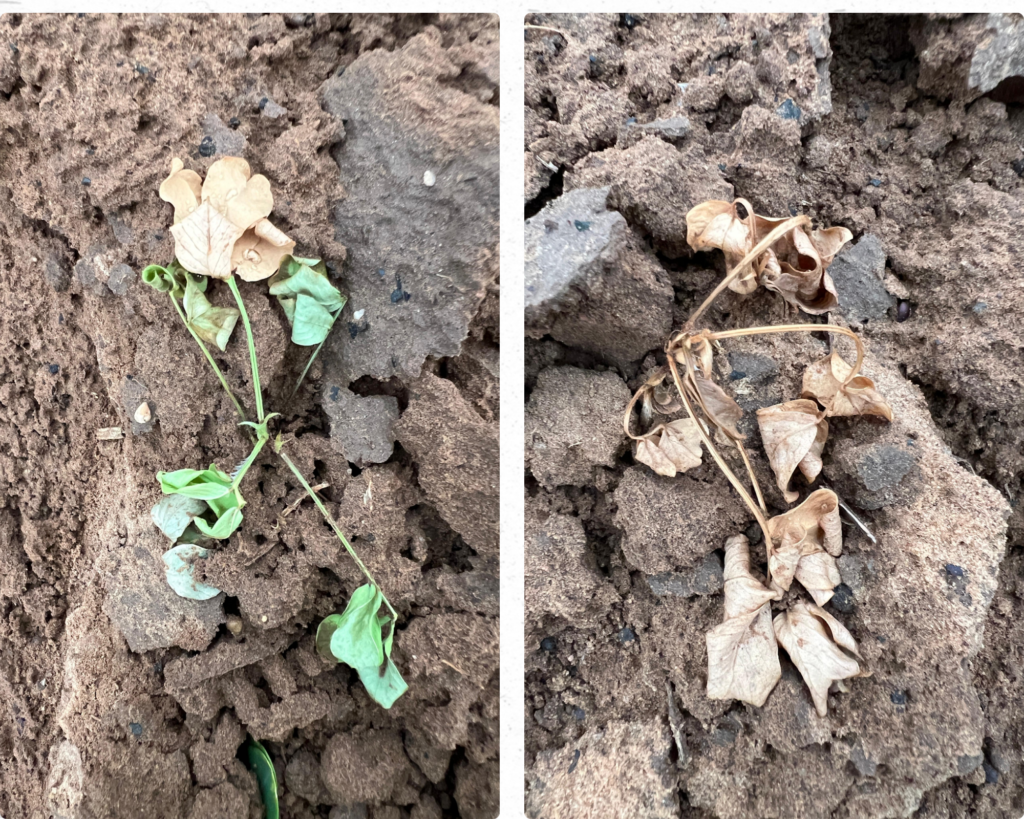
Post-emergence seedling death
Image Credit – Harsh J. Patel
Severe Symptoms (Advanced Stage)
- Complete Wilting and Sudden Death:
Entire plant collapses and dies rapidly, especially under high humidity and warm temperatures.The plant may appear healthy one day and wilted the next.
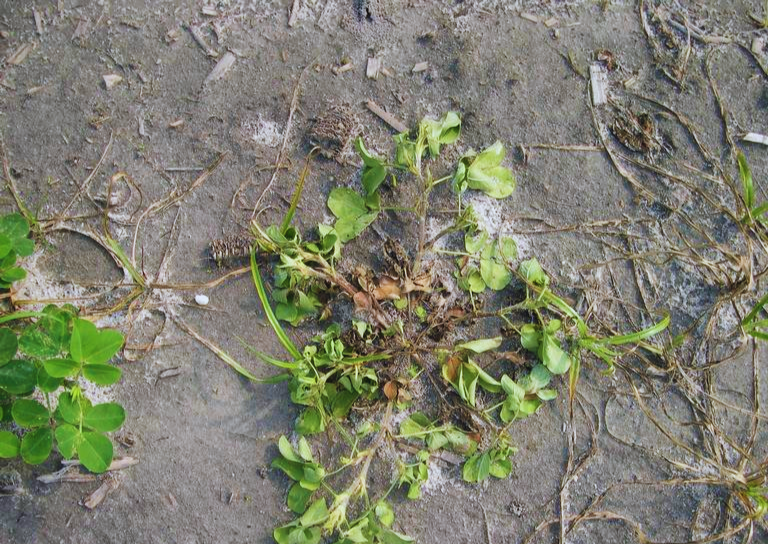
Plant wilting at vegetative stage
Image credit: Bugwood.org
- Rotting of the Collar Region:
The collar portion becomes dark brown to black, soft, and mushy. Infected plants can be easily uprooted due to a rotted, weak base. - Dry Rotting and Shriveling:
In later stages, affected tissues become dry and shriveled, especially under hot and dry weather following infection. Before total collapse, leaves may turn yellow, curl downward, and become necrotic.
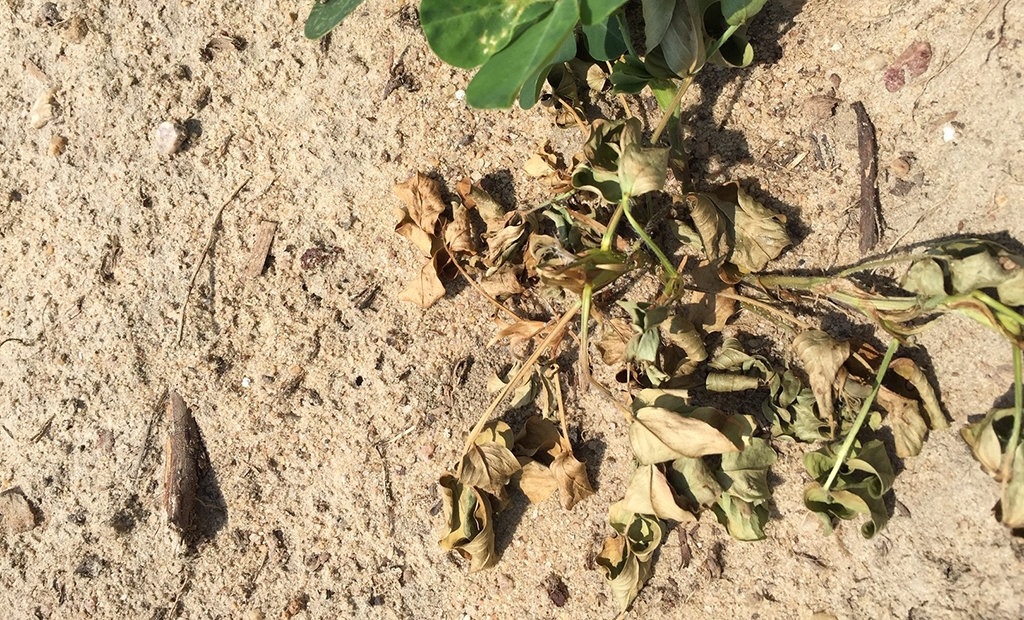
Dry rotting in plants and necrosis in leaves
Image credit: Syngenta.com
- Patchy Appearance in Field:
Infected plants die in clusters or patches, giving the field an uneven, patchy appearance.May be mistaken for other abiotic issues unless examined closely.
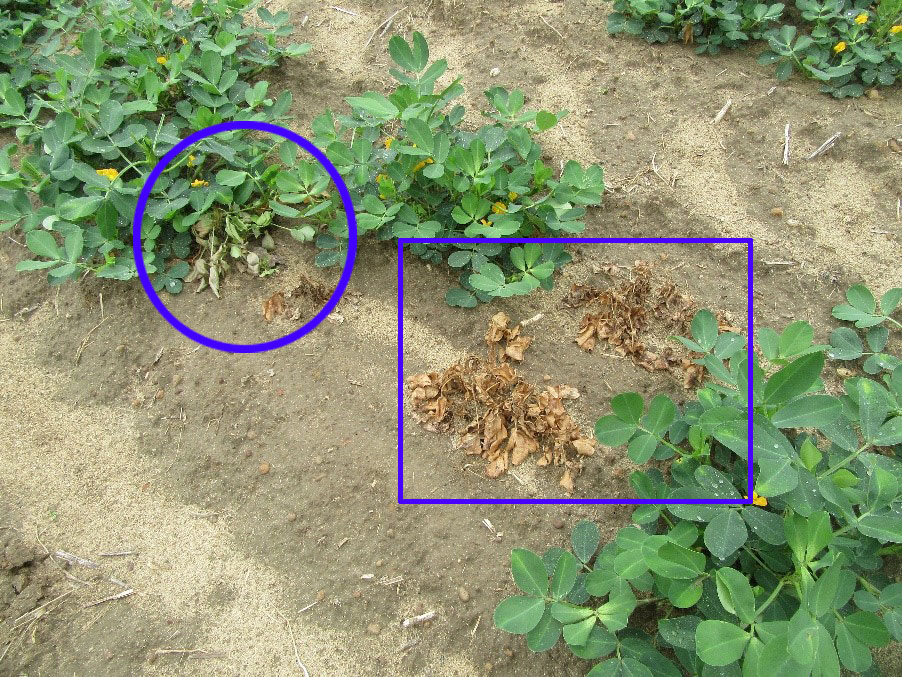
Uneven patchy appearance seen in field due to plant death
Image credit: UF/IFAS Panhandle Agriculture
- Reduced Pod Development (in late infections):
In plants that survive initial infection, the disease weakens root and stem systems, leading to poor flowering, pod formation, and low yields.
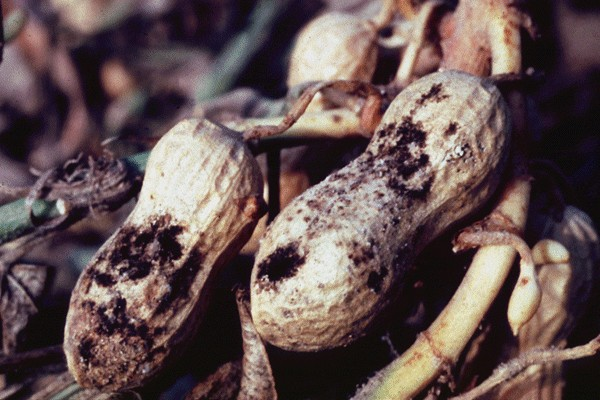
Fungus infection spread on Groundnut pods showing black sporulation
image credit: cabidigitallibrary.org
Disease Cycle of Collar Rot in Groundnut
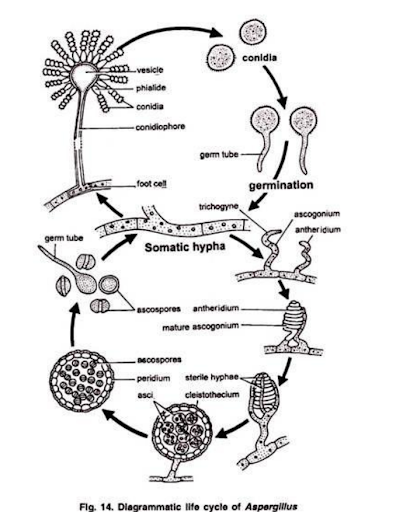
Image or content credit: VPScience.org
Survival (Overseasoning Stage / Primary Source of Inoculum)
- The fungal pathogens survive in soil and plant debris as spores (conidia) or resistant structures like sclerotia.
- Infected crop residues, seeds, and soil particles act as primary sources of inoculum.
- The pathogens can remain viable in the soil for several months or even years, especially in warm and dry environments.
Dispersal of Inoculum – Spores are dispersed through wind currents, Irrigation water, Rain splash, Soil movement via farm tools or machinery, Infected seeds may carry the pathogen into new fields, contributing to horizontal spread.
Secondary Spread (In-Season Dispersal) – Fungal threads (mycelium) can spread from infected plant tissues to adjacent healthy ones through soil or plant contact, especially under moist and warm conditions.Once established, the fungus produces more spores on infected tissue.These spores are then disseminated within the field via: Wind, Rain, Insect activity, Irrigation water
Survival
- After the crop matures or the infected plants die, the fungus returns to the soil.
- It survives on leftover plant debris, continuing the cycle into the next season.
Disease Cycle Summary:
1. Survival phase: The pathogen survives in soil or infected plant debris as sclerotia or spores.
2. Germination phase: Under favorable conditions (warm, moist soil), sclerotia germinate and produce infective hyphae.
3. Infection phase: The pathogen infects the collar region of groundnut plants—especially vulnerable during germination and early growth stages.
4. Colonization: Once inside the plant, the fungus spreads rapidly through tissue, causing wilting and death.
5. Reproduction: The pathogen produces new sclerotia or spores on dead or dying tissues, completing the cycle.
6. Dispersal: These fresh inocula are spread through water, soil movement, or farming operations, infecting new plants or persisting in the soil.
Favorable Conditions for Collar Rot Outbreak
- High soil moisture and poor drainage.
- Warm temperatures (30° – 35°C).
- Sowing in poorly prepared fields with clods or waterlogging.
- Deep sowing and use of infected seed.
- Excess use of nitrogenous fertilizers.
Things to Take Care of for Successful Collar Rot Control
- Use well-drained fields with good soil structure.
- Avoid deep sowing of seeds.
- Use certified, disease-free seeds.
- Remove and destroy plant debris after harvest.
- Ensure balanced fertilization, Avoid Excess Nitrogen;
- Seed treatment: To stop primary infection from infected seeds.
- Soil treatment & drainage management: To reduce survival and germination of spores.
- Use of Organic Amendments: Incorporate compost manure, neem cake, etc to improve microbial balance
Why Chemical Fungicides Eventually Fail
- Pathogen resistance develops with repeated use of fungicides.
- Residue levels and aflatoxin in groundnut exceed MRL (Maximum Residue Limit), leading to rejection in export.
- Multiple sprays/soil application increase input cost and damage soil microbiology.
Huntin Organics Recommendation for Collar Rot Disease Prevention & Management in Groundnut
Preventive Strategy: Start Early, Stay Safe
Product: Disnil Soil
Application Method:
- Seed treatment – 1ml/kg of seed (use 10 ml of water for uniform spread)
- Drenching near root zone / Drip irrigation/ sprinkler irrigation
| Application Frequency | Dosage of Disnil Soil | Purpose |
| Every 7 days | 100 ml/acre | Continuous protection from early infection |
| Every 10–15 days | 250 ml/acre | Preventive shield in low-pressure zones |
Continue application till crop maturity to keep root zone healthy & fungus-free.
Important Tips to Remember:
- Ensure adequate soil moisture during application
- Never skip interval if symptoms are visible
- Best results observed when applied from sowing to maturity
Curative Strategy: If Disease Intensity is high in the Field
Step 1: Kill the Fungal Load
Product: Var-ginn
Dose: 500 ml – 1 L per acre
Apply: Soil Drenching – by drip, by sprinkler, or by flood irrigation
Wait 1 hour (and within 24 hours)
Step 2: Rebuild Soil Protection
Product: Disnil Soil
Dose: 250–500 ml per acre
Apply: Soil Drenching – by drip, by sprinkler, or by flood irrigation
Continue Disnil Soil every 7–10 days afterwards
Important Tips to Remember:
- Ensure soil has enough moisture during application
- Do not mix Var-ginn and Disnil Soil in the same tank
- Keep a gap of 1 hour between both steps
- Repeat if infection continues in patches
Another Essential Practice: Soil Application of Seed Grow++
To strengthen the crop’s internal defense and support healthy growth, it is highly recommended to use Seed Grow++ through soil application.
- Dosage: 1 litre per acre
- Application Frequency: Every 15 days (from early growth till crop maturity)
Why apply Seed Grow++?
Seed Grow++ contains a rich consortium of beneficial microbes and biofertilizers that:
- Promote a strong and healthy root system
- Enhance nutrient mobilization and uptake
- Support vigorous plant growth
- Strengthen the plant’s natural immunity to resist diseases like collar rot and other fungal infections
Consistent use of Seed Grow++ ensures that the plant is well-nourished, stress-tolerant, and capable of naturally defending itself throughout the cropping cycle.
Note – Keep a gap of at least 3 – 4 days between Disnil soil and Seed grow ++ soil application
A Brief Product Details :
Disnil soil – Bio fungicide consortium containing Trichoderma v., Trichoderma h., Pseudomonas f., Bacillus s.
Var-Ginn – Highly Innovative Treated lonized Aqua based broad spectrum formulation with active herbal extracts 100% water soluble. It’s a sterilization agent, and gets evaporated within 2 hours of application time.
Seed Grow ++ is a synergistic combination of highly effective 12 biological strains of Bacteria and Endo mycorrhizae that solubilize and mobilize the plant macro and micronutrients such as N, P, K, Ca, Mg, S, Si, Zn, etc that improves nutrient balance in plant, effective root development, stress management, improvement of soil structure.
Balanced nutrition is the most important factor in plants to fight against any disease.
For more detail on Groundnut’s diseases & insect pest and its control, please visit – Grow Groundnut With Huntin

